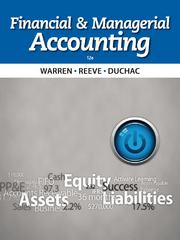Question
AASB 16 was released in February 2016 and is applicable to annual reporting periods beginning on or after 1 January 2019. Assume that an investor
AASB 16 was released in February 2016 and is applicable to annual reporting periods beginning on or after
1 January 2019. Assume that an investor from Japan had approached you at Deloitte Limited seeking advice
on the effects of AASB16 on Air New Zealand Limited and Qantas Limited financial statements for the
period 2018/2019 if these firms adopt the new leasing standard. You are to assume that all aspects of the
financial statement will be same as 2017/2018 except the effect of the AASB 16.
Deloitte is Auditors for Air New Zealand Limited and KPMG is Auditors Qantas for the financial year
2018/2019. You are required to take the role of business advisor/Analyst for the purpose of providing a
detailed report based on the following specific questions relating to AASB 16 that the investor is seeking
a report for.
As an advisor/Analyst at Deloitte, make a report addressing the following questions that the
investor has asked your firm for advice:
- As the auditor for the financial statements for the year ended 2019 for Air New Zealand Limited,
- are there regulation, restrictions or disclosure requirements etc. that has implications for your firm
- if you provide the requested advice. If so, please discuss the requirement and how you would
- resolve it
- Why has the leasing standard been changed? What will change? What does it mean for Air New Zealand Limited and Qantas Limited? And how will AASB 16 benefit and/or disadvantage Air New Zealand Limited and Qantas Limited?
- What effect does AASB 16 have on Air New Zealand Limited and Qantas Limited income statement, balance sheet and cash flow statement? What does it mean for users of Air New Zealand Limited and Qantas Limited financial statements?
Note:Compare and discuss relevant ratios where applicable. Use 2017 and 2018 Annual Reports for both Air New Zealand Limited and Qantas Limited for comparison. Attach as Appendix 1 an extract from the financial statements that you have used. Compare and discuss ratios in the body of your discussion and attach your ratio calculations including any formula for both companies in Appendix 2.
- How have these two companies reported their environmental and social aspects such as energy use and efficiency, carbon emissions, etc.? Is there any regulatory requirement for such reporting? If so, summarise the requirements and discuss what they have reported. If there is no regulatory requirement, is there any evidence that these companies have reported/disclosed any environments and social information? If so, summarise how and what is reported/disclosed.
- Evaluate whether, overall, AASB 16 would result in reporting that would be more useful to users of these companies' financial statements.
- Summarise your discussion for the investorwho is from a non-accounting background.
Note:Make sure your team considers the relevant specific technical and theoretical issues relating to AASB 16 for your investor's perspective. You are also required to consider the theoretical implication of accounting information produced from the perspective of your investor.
Step by Step Solution
There are 3 Steps involved in it
Step: 1

Get Instant Access to Expert-Tailored Solutions
See step-by-step solutions with expert insights and AI powered tools for academic success
Step: 2

Step: 3

Ace Your Homework with AI
Get the answers you need in no time with our AI-driven, step-by-step assistance
Get Started


